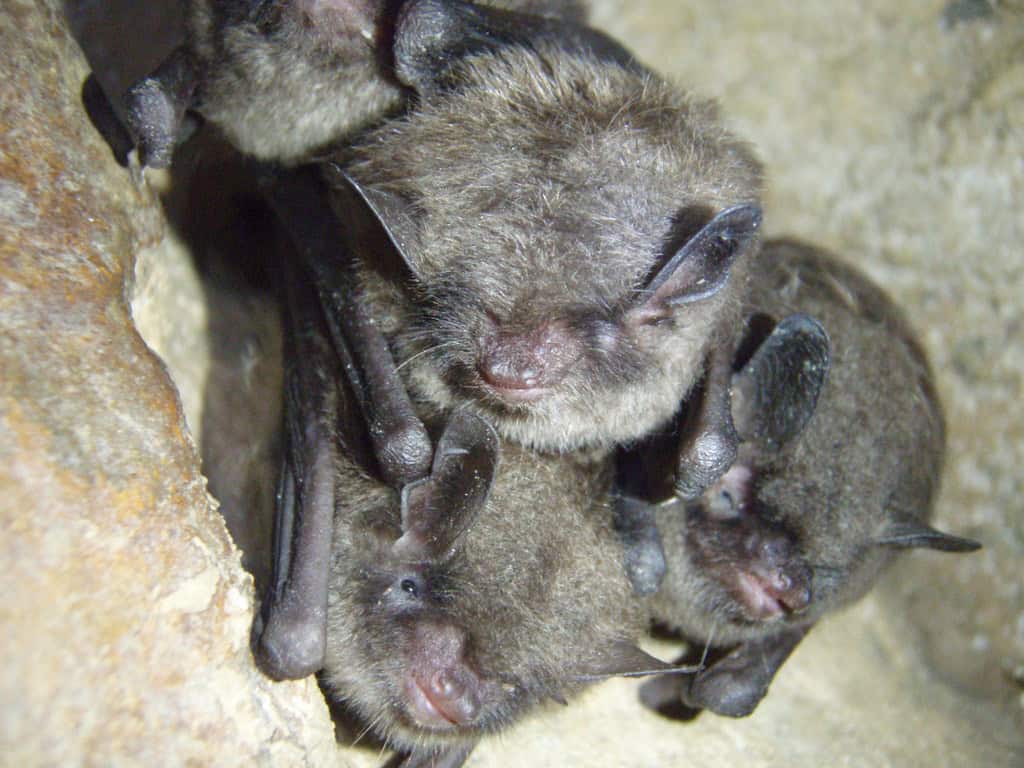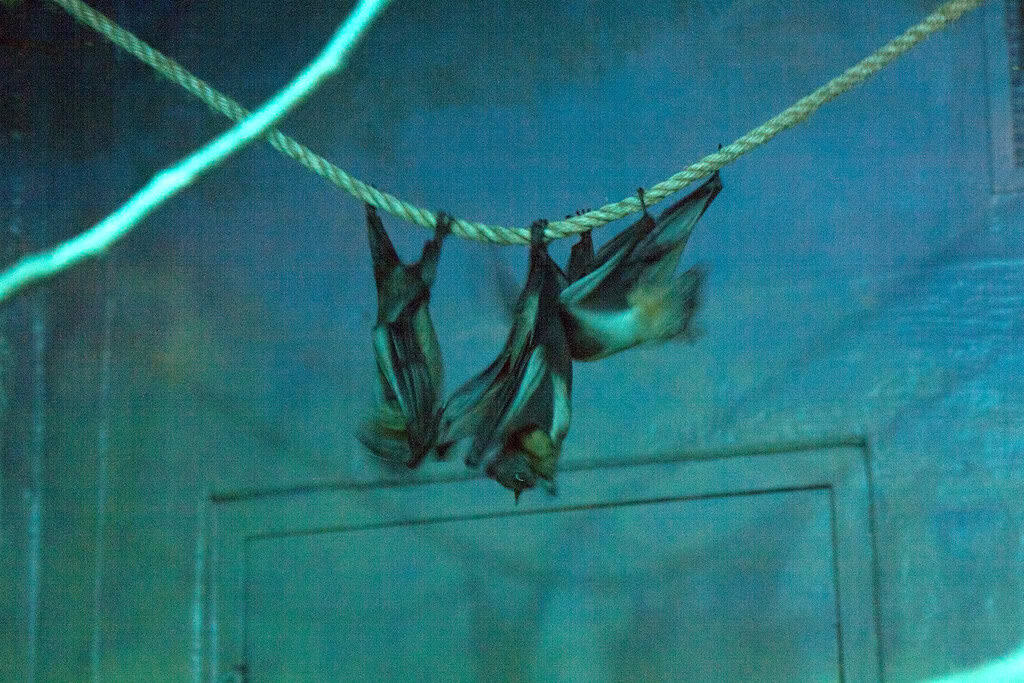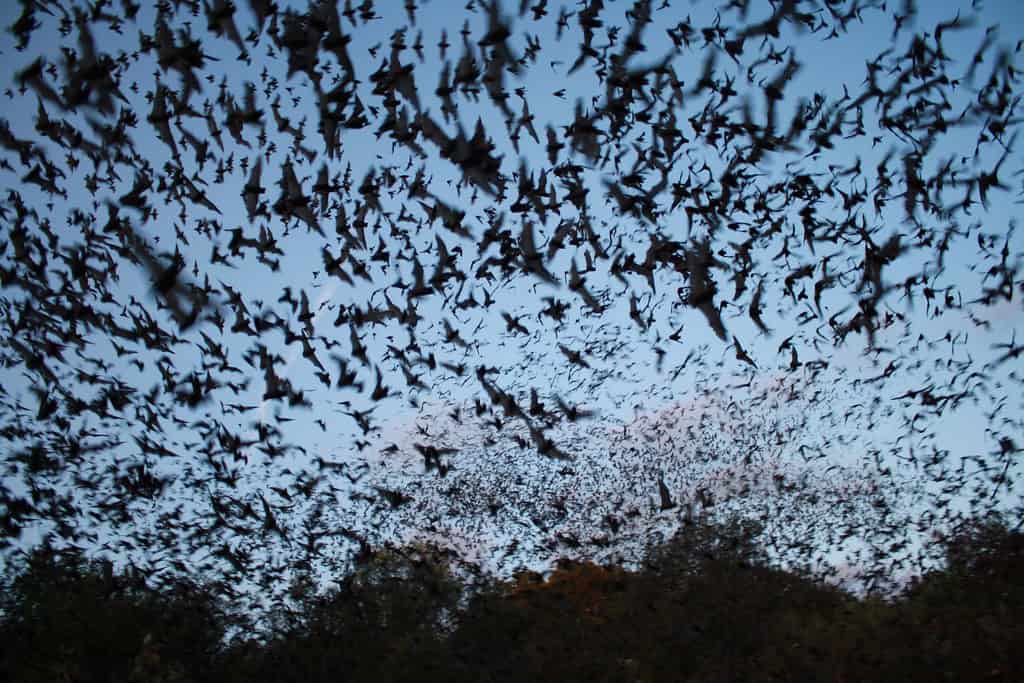Throughout human history, few creatures have inspired such a complex mixture of fear, reverence, and fascination as the bat. These nocturnal mammals, with their leathery wings and mysterious habits, have fluttered through the folklore and mythology of virtually every human culture. From China’s symbols of good fortune to Eastern Europe’s vampiric associations, bats occupy a unique position in our collective imagination, simultaneously representing both auspicious blessings and ominous warnings. This duality has cemented their place in cultural traditions worldwide, where they serve as powerful omens capable of foretelling everything from longevity and prosperity to disease and death.
The Biological Reality Behind the Myths

Before delving into folklore, understanding the biological reality of bats provides crucial context for how these myths developed. Bats comprise about 20% of all mammal species, with over 1,400 species identified worldwide. As the only mammals capable of true flight, their unusual physical characteristics and nocturnal habits have long set them apart in the animal kingdom. Their ability to navigate in complete darkness using echolocation—a biological sonar system—further enhanced their mysterious reputation among ancient observers.
Many bat species live in large colonies numbering thousands or even millions, emerging at dusk in spectacular clouds that can darken the sky. This dramatic emergence behavior, coupled with their preference for dwelling in caves and abandoned structures, created the perfect conditions for humans to associate them with supernatural forces and the underworld. Scientific understanding of bats has advanced tremendously, but the folkloric interpretations of their behavior continue to influence cultural perceptions around the globe.
Bats as Symbols of Good Fortune in Chinese Culture

In Chinese culture, bats hold an overwhelmingly positive significance, representing good fortune, happiness, and longevity. This positive association stems largely from linguistic coincidence: in Mandarin, the word for bat (蝠, fú) sounds identical to the word for blessing or good fortune (福, fú). This phonetic similarity led to bats becoming one of the most prevalent and beloved symbols in Chinese decorative arts. The image of five bats arranged in a circle, known as wǔfú (五福), represents the “Five Blessings”: longevity, wealth, health, love of virtue, and a peaceful natural death.
Chinese artwork frequently features bats in various configurations and artistic styles. They appear on everything from imperial robes and furniture to everyday household items and architectural decorations. During the Qing Dynasty (1644-1912), bat motifs reached the height of popularity, often combined with other auspicious symbols like peaches (longevity) or coins (wealth) to compound their fortunate associations. Even today, bat imagery remains a common sight during Chinese New Year celebrations as a wish for prosperity in the coming year.
The Mayan Bat God Camazotz

In stark contrast to China’s auspicious bats, Mesoamerican cultures—particularly the Maya—associated bats with death and sacrifice. The fearsome bat god Camazotz (meaning “death bat” in the K’iche’ Mayan language) ruled over the land of darkness in the Mayan underworld. According to the Popol Vuh, the Mayan creation epic, Camazotz resided in a cave called the “House of Bats” where he decapitated one of the hero twins during their journey through the underworld. This powerful deity embodied the frightening aspects of bats: their association with darkness, blood, and sudden death.
Archaeological evidence suggests that bat imagery played a significant role in Mayan sacrificial rituals. Temples adorned with bat sculptures and glyphs have been discovered throughout the Mayan world, particularly in Guatemala and southern Mexico. The cultural significance of Camazotz transcended mere superstition; this deity represented important concepts of transformation and rebirth, as bats emerge from darkness just as the sun rises anew each day. The dualistic nature of the bat god—representing both death and renewal—mirrors the complex role bats play in global folklore.
European Vampire Myths and Bat Associations

Perhaps no folkloric connection has proven more enduring than that between bats and vampires in European mythology. While vampire legends existed for centuries before any bat connection, the association was cemented in the 18th and 19th centuries with the discovery of vampire bats in the Americas. These three species of bats that feed exclusively on blood provided a biological basis for supernatural fears. When Bram Stoker published “Dracula” in 1897, featuring the count’s ability to transform into a bat, the link between vampires and bats became permanently established in Western popular culture.
Before this literary connection, bats already occupied an ominous position in European folklore. Medieval bestiaries often portrayed bats as imperfect creatures—neither bird nor beast—existing in a liminal state that mirrored the vampire’s status between life and death. In many European traditions, a bat entering a house foretold a death in the family, while bats circling a house three times were believed to herald impending doom. These superstitions combined with the vampire bat’s actual blood-feeding behavior created the perfect conditions for bats to become synonymous with the undead in European imagination.
Bats in Native American Traditions

Native American perspectives on bats varied widely across different tribes and regions, reflecting the diverse ecosystems and cultural contexts throughout North America. Among the Navajo, bats were considered sacred creatures associated with both death and rebirth. Their presence at twilight—neither day nor night—gave them special significance as creatures of transition. Some Navajo stories cast bats as messengers between the world of the living and the spirit realm, carrying important communications across this boundary.
For the Cherokee and several other eastern tribes, bats often appeared in creation myths as clever tricksters. In one common narrative, Bat wins a ball game against larger animals through cunning and agility, demonstrating that size isn’t everything. The Apache, meanwhile, believed that dreams of bats predicted good hunting, associating these nocturnal creatures with successful food acquisition. These varied perspectives illustrate how bat folklore often reflected the specific environmental and cultural contexts of different indigenous communities, resulting in a complex tapestry of beliefs rather than a single unified view.
African Bat Folklore and Divination

Across the diverse cultures of Africa, bats feature prominently in folkloric traditions as creatures of both divination and spiritual significance. In parts of West Africa, particularly among certain communities in Nigeria and Ghana, bats are considered bearers of messages from ancestors. Their erratic flight patterns were interpreted by traditional diviners as coded communications from the spirit world, with specific movements indicating different types of warnings or blessings for the community.
In several East African traditions, including those found in Kenya and Tanzania, bats serve as important omens related to weather prediction. Unusual bat activity during daylight hours might predict imminent storms or drought conditions, providing practical agricultural guidance disguised as superstition. Meanwhile, in parts of Southern Africa, particularly among some Bantu-speaking peoples, fruit bats were associated with fertility and abundance due to their role in seed dispersal and plant pollination. These positive associations exist alongside more ominous beliefs about certain species being familiars of witches or sorcerers, illustrating the ambivalent position bats hold in African traditional knowledge systems.
Bats in Australian Aboriginal Dreamtime

In Australian Aboriginal mythology, bats occupy a significant place within the spiritual framework of the Dreamtime—the time of creation when ancestral beings formed the world. For many Aboriginal groups, particularly in northern Australia, flying foxes (fruit bats) feature prominently in creation stories. The Yolngu people of Arnhem Land have complex narratives about Djambuwal, a powerful ancestral being associated with thunderstorms who takes the form of a flying fox. His movements across the landscape created key geographical features and established important ceremonial practices.
Other Aboriginal communities view bats as ancestral spirits themselves. In some traditions, particularly in Queensland and the Northern Territory, certain bat species are considered reincarnations of specific ancestors, deserving special respect and protection. Interestingly, these spiritual beliefs often aligned with sustainable hunting practices, as traditional laws restricted when and how many bats could be harvested for food, effectively creating early conservation protocols. This illustrates how folkloric beliefs about bats sometimes served practical ecological purposes, preserving important species while maintaining cultural traditions about their spiritual significance.
Medieval European Bat Demonology

During Europe’s Middle Ages, bats became firmly associated with demonic forces and witchcraft. Their nocturnal nature, leather-like wings, and preference for abandoned buildings aligned perfectly with medieval conceptions of evil. Church-sponsored bestiaries frequently depicted bats as servants of Satan, creatures that shunned the light of God in favor of darkness. This association intensified during the witch trial era (15th-17th centuries), when bats were believed to be witches’ familiars—spiritual companions that assisted in dark magic and communicated with demonic forces.
The anatomical features of bats further fueled these sinister associations. Their sharp teeth, combined with their unique wing structure—which medieval observers likened to hands—contributed to their portrayal as unnatural or corrupted creatures. Some medieval texts claimed bat blood was a key ingredient in witches’ potions, while others suggested that carrying bat bones provided protection against dark magic—illustrating the paradoxical belief that demonic creatures could also ward off evil. These medieval European perspectives on bats as harbingers of doom and supernatural malevolence deeply influenced Western cultural attitudes, leaving echoes that persist in contemporary Halloween imagery and popular culture.
Polynesian Navigation and Bat Lore

Throughout Polynesia, bats held special significance for their perceived navigational abilities. Traditional navigators in islands ranging from Hawaii to New Zealand observed that certain bat species could travel long distances over open ocean, seemingly without getting lost. This remarkable ability led to bats being incorporated into navigational folklore and practices. In Samoan traditions, for instance, seafarers would sometimes release captive bats when lost at sea, believing the creatures would instinctively fly toward the nearest land, guiding vessels to safety.
Beyond navigation, Polynesian bat folklore often positioned these creatures as guardians of sacred spaces. In Hawaiian mythology, the ‘ōpe’ape’a (Hawaiian hoary bat) was associated with particular family gods (‘aumakua) and considered a protective spirit for certain lineages. Similarly, in Tongan and Fijian traditions, bats were sometimes believed to harbor the spirits of ancestors, particularly those who had been great travelers or navigators in life. These positive associations stand in marked contrast to many Western traditions, demonstrating how the same creature could inspire such different folkloric interpretations across cultural boundaries.
Japanese Bat Symbolism and Yokai

In Japanese folklore, bats (kōmori) occupy an ambiguous position between good fortune and supernatural danger. Unlike Chinese traditions that overwhelmingly view bats positively, Japanese perspectives incorporate elements of both auspiciousness and caution. Bats appear in traditional Japanese art as symbols of good luck, particularly in connection with longevity and happiness. This positive association likely developed through cultural exchange with China, though Japanese bat symbolism evolved its own distinct characteristics over time.
More ominously, Japanese folklore features several bat-like yokai (supernatural entities) that embody darker aspects of bat mythology. The most famous is probably the Koumori-onago, a bat woman who seduces unwary travelers before revealing her true nature and attacking them. Another notable bat yokai is the Yamabiko, an echo spirit sometimes depicted with bat-like features that mimics human sounds in mountain valleys. These supernatural entities reflect the Japanese cultural tendency to recognize both beneficial and harmful aspects of natural forces, positioning bats as creatures capable of bringing either fortune or misfortune depending on the context of their appearance.
Modern Science Versus Ancient Superstitions

Modern scientific understanding has dramatically reshaped our knowledge of bats, often contradicting ancient superstitions while sometimes validating the ecological wisdom embedded in traditional beliefs. Ecologists now recognize bats as keystone species in many ecosystems, providing vital services including insect control, pollination, and seed dispersal. A single bat can consume thousands of mosquitoes nightly, while fruit bats pollinate over 500 plant species worldwide, including economically important crops like bananas, mangoes, and agave (used for tequila production).
Yet despite their ecological importance, ancient fears continue to influence public perception and policy. The COVID-19 pandemic reignited bat-associated anxieties when coronaviruses similar to SARS-CoV-2 were identified in horseshoe bats, though the exact transmission pathway to humans remains under investigation. This scenario illustrates the complex reality: while most bat folklore contains exaggerations or misunderstandings, some traditional cautions about disease transmission from bats do contain kernels of truth. Conservation biologists now face the challenge of protecting these essential creatures while acknowledging legitimate public health concerns—a balancing act that requires separating harmful superstitions from both scientific fact and valuable traditional ecological knowledge.
The Enduring Legacy of Bat Folklore

The rich tapestry of bat folklore continues to influence contemporary culture in profound and sometimes surprising ways. From Batman’s iconic silhouette to Halloween decorations, bat imagery permeates modern society, carrying with it the accumulated symbolic weight of centuries of folklore. This enduring legacy speaks to something fundamental in the human psyche—our tendency to project meaning onto the natural world, particularly those aspects that remain mysterious or operate beyond our direct observation. Bats, with their nocturnal habits and remarkable biological adaptations, remain perfect canvases for these projections despite advances in scientific understanding.
Beyond mere cultural artifacts, these folkloric traditions continue to impact bat conservation efforts worldwide. In regions where positive bat associations prevail, such as parts of Asia, conservation initiatives often find stronger community support. Conversely, areas dominated by negative bat folklore face greater challenges in protecting these ecologically crucial mammals. By understanding and respecting the cultural significance of bats across different traditions, conservation biologists and cultural anthropologists have begun collaborating to develop more effective protection strategies that honor both scientific imperatives and cultural sensitivities. This holistic approach recognizes that the future of bat conservation depends not just on biological knowledge, but on engaging with the powerful stories humans continue to tell about these extraordinary creatures.
- How Bison Are Reshaping the American Prairie - August 25, 2025
- Bats as Harbingers of Luck—and Doom—in Global Folklore - August 25, 2025
- Are Wildlife Corridors Really Helping Animals Migrate? - August 25, 2025

